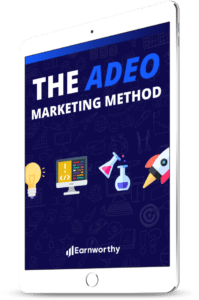
Inbound marketing can be a very powerful method for turning strangers into customers and promoters of your business, organization, or brand.
If you’re not already familiar with inbound marketing and the inbound methodology, I urge you to take a look at HubSpot’s overview. They do an excellent job of explaining the four marketing actions that live at the core of an inbound strategy: Attract, Convert, Close, and Delight.
Once you learn about these actions and how they work together to create the ultimate marketing funnel, you’ll see just how critical it is to have a big picture strategy behind your marketing campaign.
But having a strategy is only helpful if you know how to implement it. And that is where agile marketing comes in.
You see, agile marketing is a framework that can help you put your marketing strategy into action, in a way that is adaptive, fluid, and responsive.
And that is why inbound marketing and agile marketing work so well together.
[Tweet “#AgileMarketing is an adaptive, fluid, and responsive approach to marketing.”]
The Methodology and the Framework
Inbound marketing can give you the tools, tactics, technology, and techniques to convert strangers into customers, but it won’t necessarily put itself into action.
Agile marketing on the other hand can provide the perfect operating environment to make inbound work for your goals.
Again, inbound marketing is the methodology and agile marketing is the framework to put it into action.
Yes, you can benefit from one without the other, but together they create a marketing synergy that we all need in the 21st century.
If you’re looking for the perfect way to take your marketing campaign to the next level, you should seriously consider combining an inbound marketing strategy with the agile marketing process.
And believe me, marketers everywhere are already making this combo work like a charm.
[Tweet “#Inbound Marketing + #AgileMarketing = A Perfect Match for 2015.”]
Sounds Good, but How Does It Work?
Now, let’s look at a few examples of how you can use inbound marketing and agile marketing together.
Imagine launching a social media campaign from scratch. I’m talking about setting up channels on Facebook, Twitter, Instagram, etc., optimizing each platform, pumping out unique content, trying to grow your audience, and engaging with them along the way.
This is not an easy task, but what makes it even more complicated is the speed with which social media is evolving. For instance, a Facebook page in 2015 looks significantly different from a Facebook page from just a few years ago.
If you’re not able to rapidly adapt to such changes, you’re not only going to be frustrated, but your entire social media campaign will look outdated.
However, agile marketers are always a couple of steps ahead of the crowd. They are able to keep things moving and evolving. Change is something they embrace.
[Tweet “As marketing gets fast, agile marketers get even faster. #AgileMarketing”]
Focus on What Really Matters
The key is in focusing on the principles and not getting caught up in unnecessary details. If the goal of their social media campaign is to generate high-quality traffic, they’re focused on that.
A few small tweaks to the layout of a Facebook page won’t stop them for very long.
While this might seem like common sense, I see folks make these mistakes all the time.
Keep in mind, marketing has traditionally been an extremely slow-moving activity.
Print ads are developed in a slow and laborious process that is not receptive to sudden changes.
Television ads are created in an extremely formulaic manner, where each step must be completed before the next step can begin.
Well, I’m sorry to break it to you, but marketing in 2015 cannot afford to be slow or process-driven. You can thank our ever-decreasing attention spans for that.
Gosh, the majority of you aren’t even reading this article–you’re skimming it on a smartphone while doing something else!
It needs to be proactive rather than reactive, or in other words, it needs to be agile.
[Tweet “#Marketing has traditionally been very slow. Let’s change that.”]
Stop Marketing Like It’s 2005
In conclusion, you’re probably reading this because you really want to get an edge on the competition. You want to be better than 99% of the marketers out there.
Maybe you’re already using the inbound methodology, or maybe you’re already using agile marketing in one way or another.
That’s great. But the real secret is in using both together. By combining agile marketing with inbound marketing, you’re setting yourself up for success in 2015 and beyond.
Give it a try, and let me know how it works for you. Seriously, I want to hear some interesting stories.





